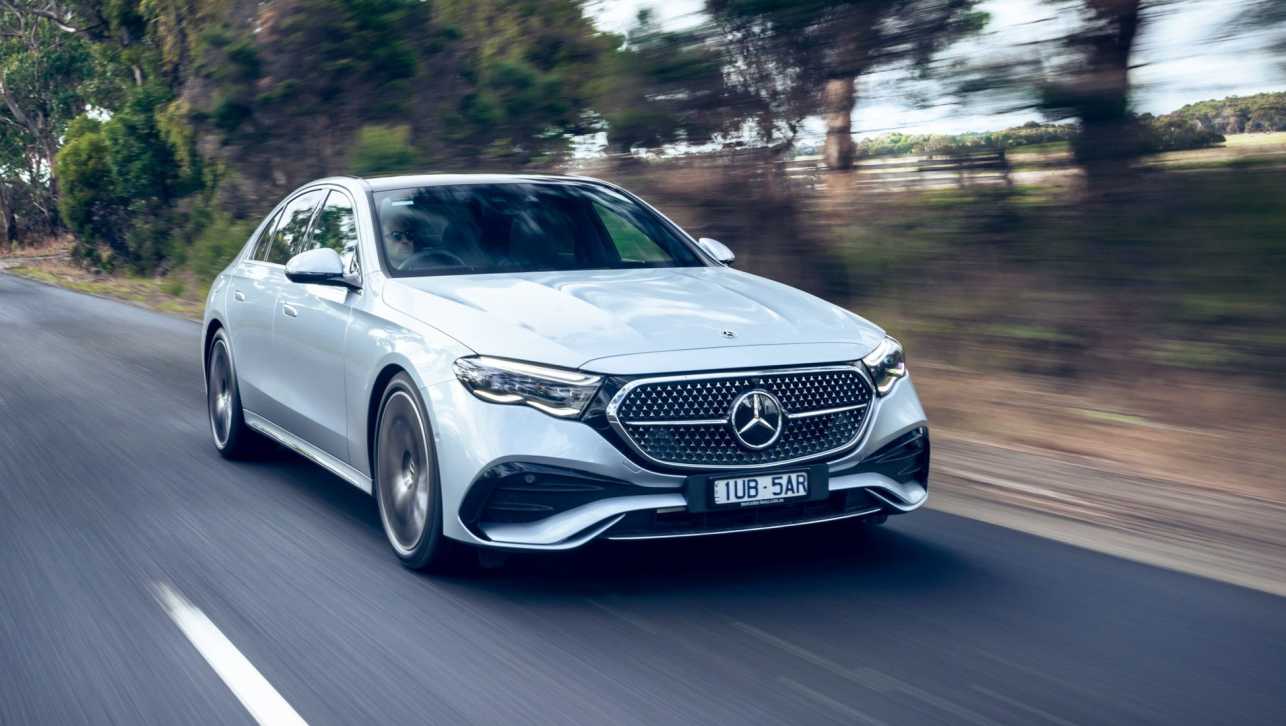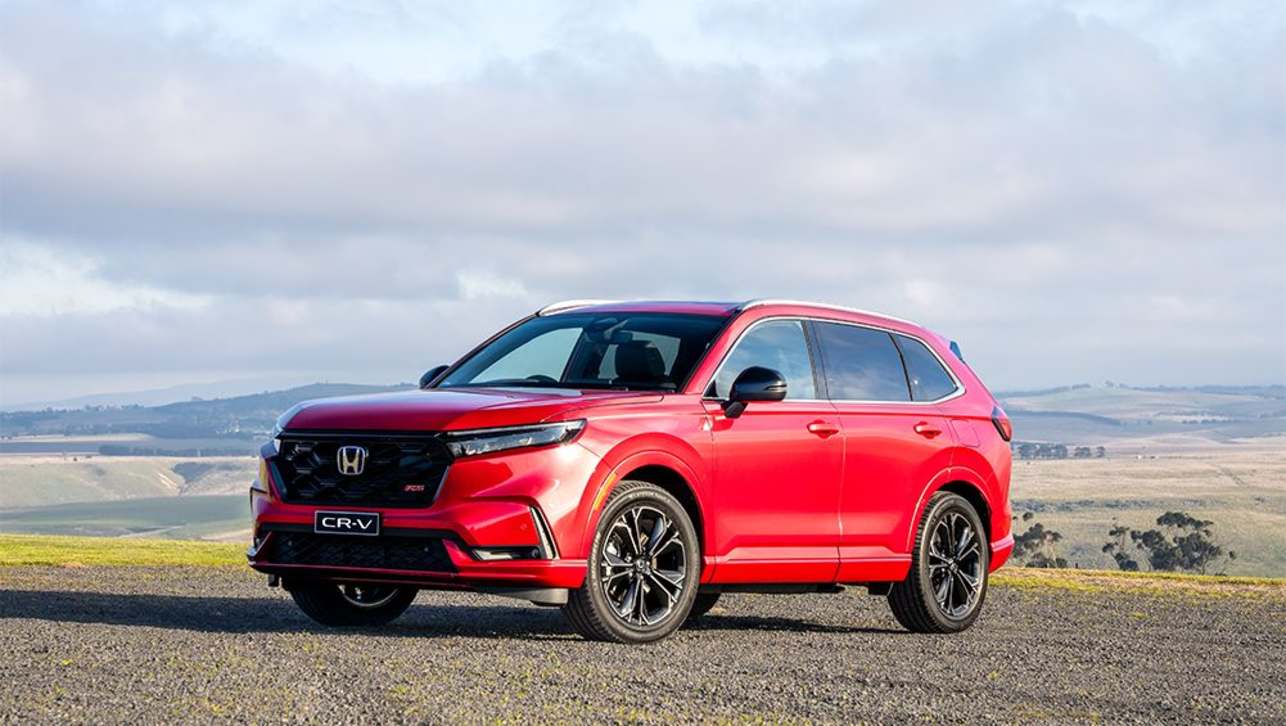When something is working, you don’t fix it. And the X-Trail has worked pretty well for Nissan; been a star performer in fact, with sales that led the mid-size SUV segment in 2003, and remained in the top three since, with sales of more than 70,000 since it was launched in 2001.
So what could they do for the new version?
Mainly, make it roomier, more powerful, more economical and better equipped. But without changing the overall appearance too much, even though every piece of sheetmetal is subtly different.
Nissan’s research said the market liked the existing body shape, so they’ve grown and stiffened the body but kept the basic lines and simply given them a brushover, maintaining the muscular look of the front bumper and swelling wheel arches.
Visibility is excellent, with a sloping bonnet and headlight markers giving a clear sense of the front corners; while the low waistline and restyled pillars add to the airiness of the roomier cabin.
A revised suspension has meant a lower boot floor, with capacity increased by about 50 per cent to 603 litres; including a hidden removable drawer; and muddy or damp items aren’t a problem, with a washable luggage board.
Interior surfaces have been improved, and armrests padded up for better comfort, while redesigned instruments and switches add to the feeling of improved quality.
Clever creature comforts include four of the six cup holders being cooled or heated by an air conditioning diversion. This is great if you stick to cold drinks in summer and warm in winter. But trying to keep a latte warm in the mandatory ultra-low NQ aircon temperature setting would be impossible.
Oddly, there’s no grab handle on the driver’s side, even though there’s the moulded cavity for one. This would be to accommodate the changeover from left to right-hand drive markets, but while you don’t expect the driver to be grabbing a panic strap, it could come in handy for climbing in and out of the fairly high set vehicle; although it’s another hard point near your head in a crash.
Nissan has simplified and smartened up the electronic all-wheel drive system, with the choice between two-wheel, automatic all-wheel mode or 4WD lock being selected with a dial on the centre console.
A downhill control uses the brakes to maintain a descent speed of 8km/h, while a hill start system automatically activates on any slope of more than 10 per cent, holding the X-Trail until you hit the accelerator. And the stability control can be deactivated to allow some helpful wheelspin in deep sand or gravel. The safety package is underpinned by anti-skid brakes with brake force distribution, and six airbags; twin front, plus thorax side and full-length curtains.
One petrol engine is on offer; Nissan is looking at the viability of the diesel offered overseas; with two transmissions; a six-speed manual, or a continuously variable automatic with a manu-matic mode that is optionable at a $2000 premium.
Prices start at $31,990 for the base ST trim, which gets you all the essentials with fabric trim, 16” steel wheels and a full-size spare.
The $35,990 ST-L gets 17” alloys, foglamps, leather-trimmed wheel and levers and a six-stacker for the CD audio system, while the top level $38,990 Ti adds goodies like leather upholstery, sunroof and heating on the front seats.
The X-Trail goes on sale on 1st November 2007, and Nissan Australia hopes to at least maintain the current sales flow of about 1000-1100 per month. The volume seller is expected to be the ST with 60 per cent, with the Ti taking 25 per cent and the mid-range ST-L mopping up the remaining 15 per cent.
On the road
The X-Trail has always counted itself as a true off-roader, rather than a pretender, and improvements in the new model increase that ability while also raising the on-road performance.
The off-road geometry is very workable with an approach angle of 26 degrees, departure of 22, breakover of 19 and wading depth of 350mm.
The X-Trail has improved manners on the tar, but it still falls short of being car-like. Although it doesn’t wallow or get too tippy in the bends; and doesn’t get anyway near being dangerous; cornering is still a chore. In fast corners you’re always aware of the vehicle’s size and 1.5-tonne weight, although the extra 100-150kg over the previous model isn’t really noticeable.
But you’ll feel a touch of understeer creeping in when you’re under load; although it’s less than on the predecessor.
The cabin is fairly quiet except for some tyre noise over rough bitumen, and the ride is not bad over the rougher surfaces, tending to bounce rather than jar.
Steering is well weighted and precise in following commands, but the feel is strangely artificial.
However the 2.5-litre engine is a strong unit, which serves the X-Trail well with more on tap than most of its competitors; developing 125kW of power at 6000 and 226Nm of torque at 4400.
But with those high peaks, the drivetrain can be a little laid back in response, as there’s not a great deal low down.
The manual mode in the CVT is lacklustre unless revs are kept high, but in full auto it takes care of most tasks neatly and very smoothly.
While the manual gives more direct response, the CVT wins out on economy, coming in at 9.3L/100km while the manual is 0.2 higher.
This figure, coupled with the decent price point and the X-Trail’s sturdy reputation, will keep attracting loyal fans, but you can’t help wondering if it would win a few more if that CVT was mated to the European diesel engine.


.jpg)

.jpg)


.jpg)



.jpg)



.jpg)

.jpg)










.jpg)
Comments